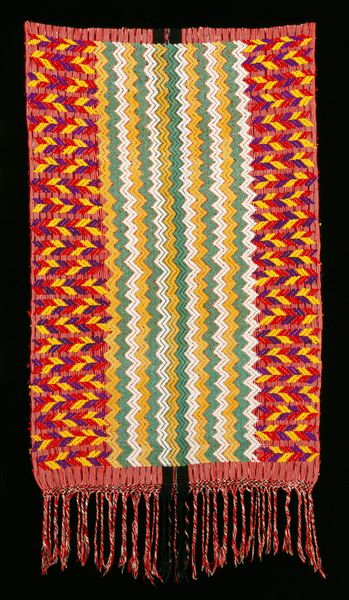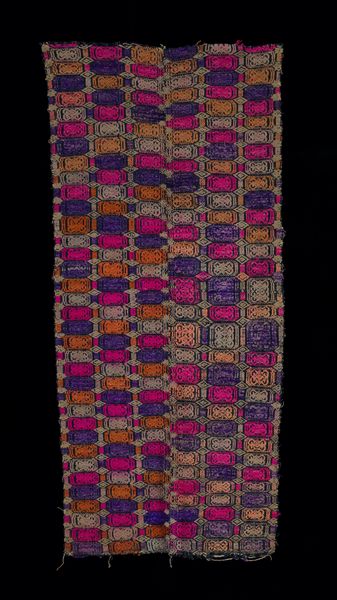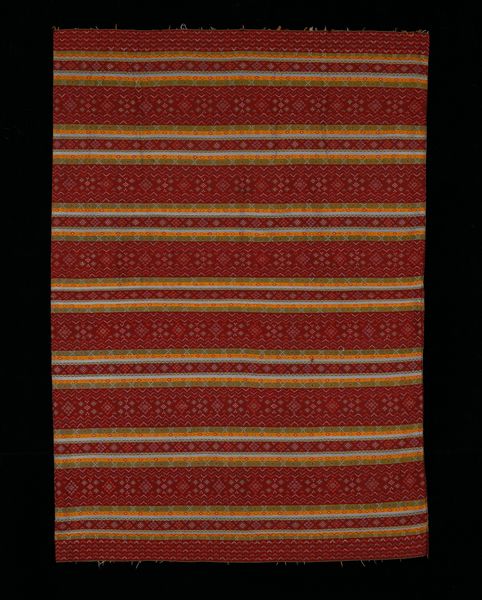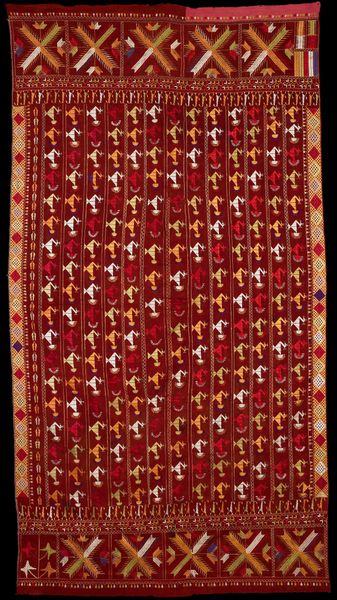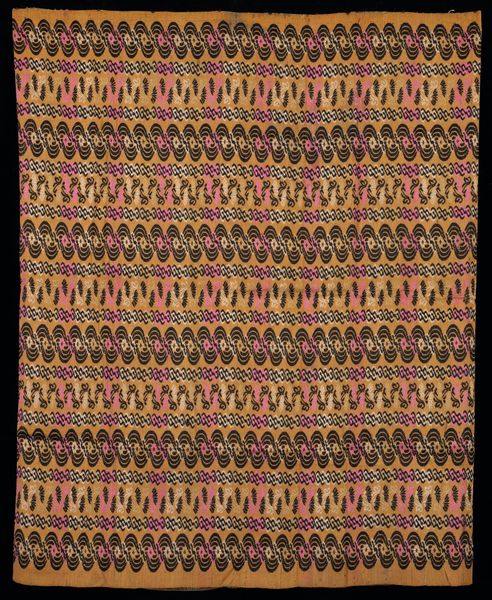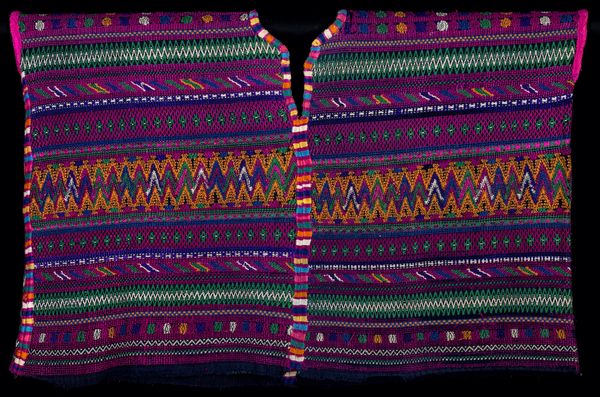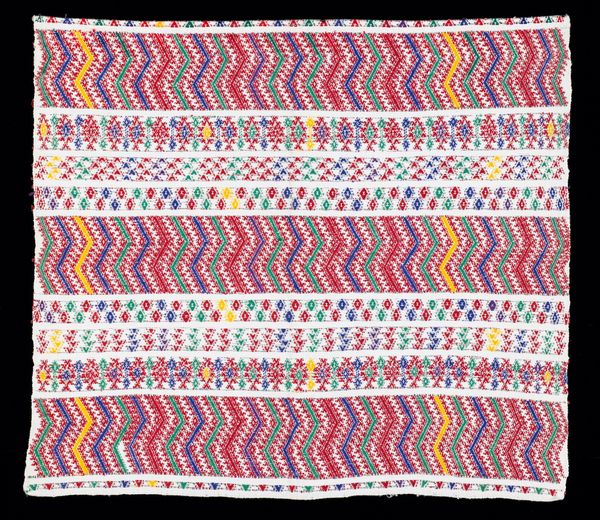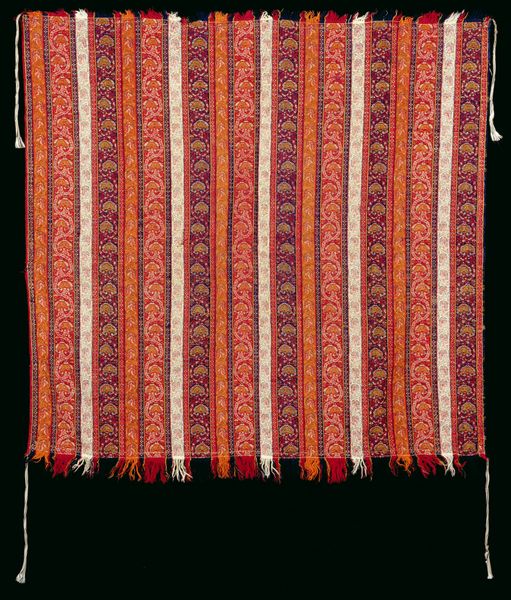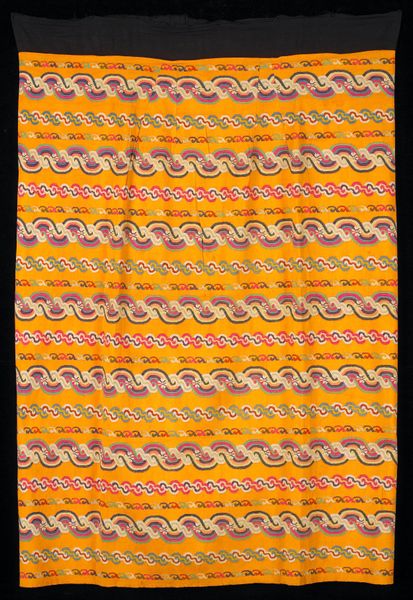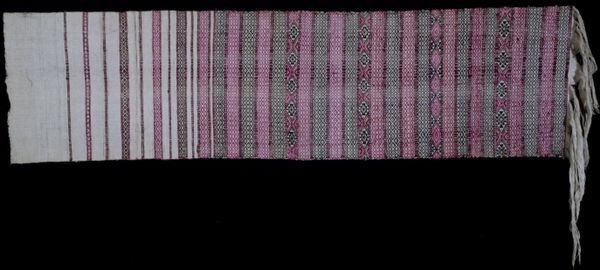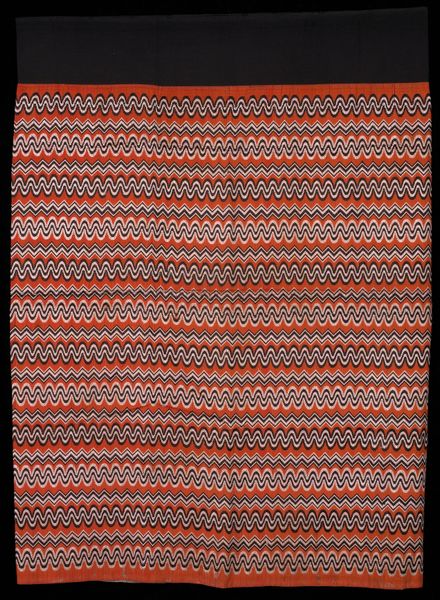
silk, textile, cotton
#
organic
#
silk
#
asian-art
#
textile
#
organic pattern
#
intricate pattern
#
cotton
#
decorative-art
Dimensions: 46 7/8 x 32 13/16 in. (119.06 x 83.34 cm)
Copyright: Public Domain
Curator: This striking textile is a "Sarong (Luntaya)," likely created around the 20th century. You can currently find it here at the Minneapolis Institute of Art. It’s made with both cotton and silk. Editor: Immediately, I'm struck by the intense, almost vibrating, quality of the repetitive patterns against that bold magenta background. There's a dense layering of forms that’s simultaneously chaotic and controlled. Curator: I think that tension is key to understanding this type of textile, where the repetition serves less as pure decoration, and more as a visual language. The patterns evoke organic forms—waves, spirals—but are rendered in a very precise, geometric way. The juxtaposition really creates a fascinating play on figure and ground, line and shape. Editor: Absolutely, these waves remind me of water motifs which often represent the cyclical nature of life in Southeast Asian cultures. But then I’m drawn to these little floral-like bursts between the undulating lines. Are these stylized depictions of native flora? Perhaps representations of local blooms meant to ward off evil or bring good luck to the wearer. Curator: That's an interesting idea, considering a Sarong’s cultural usage. While it’s tempting to focus solely on their practical role as garments, it is worthwhile to understand the composition elements at play. Look at how these bands create a sense of visual rhythm; the slight variations in each row almost mimic musical refrains, or stanzas. The interplay among the textile patterns also feels symbolic, creating movement and visual echoes. Editor: It speaks to the sarong's integration of artistic expression and functional craft. As you noted, the slight variations really do make a difference. In addition to visual music, the variety also reflects human agency as it signifies the artisan who, as creator, inserts herself or himself within repetitive patterns and across long historical durées. The sarong transforms from a textile into a layered message that echoes community memory, culture and shared symbolism. Curator: Very well articulated. By observing both its form and symbolism we were able to enrich our understanding and experience. Editor: It’s an interesting journey and lens on everyday items and artistic, as well as personal expression.
Comments
No comments
Be the first to comment and join the conversation on the ultimate creative platform.


